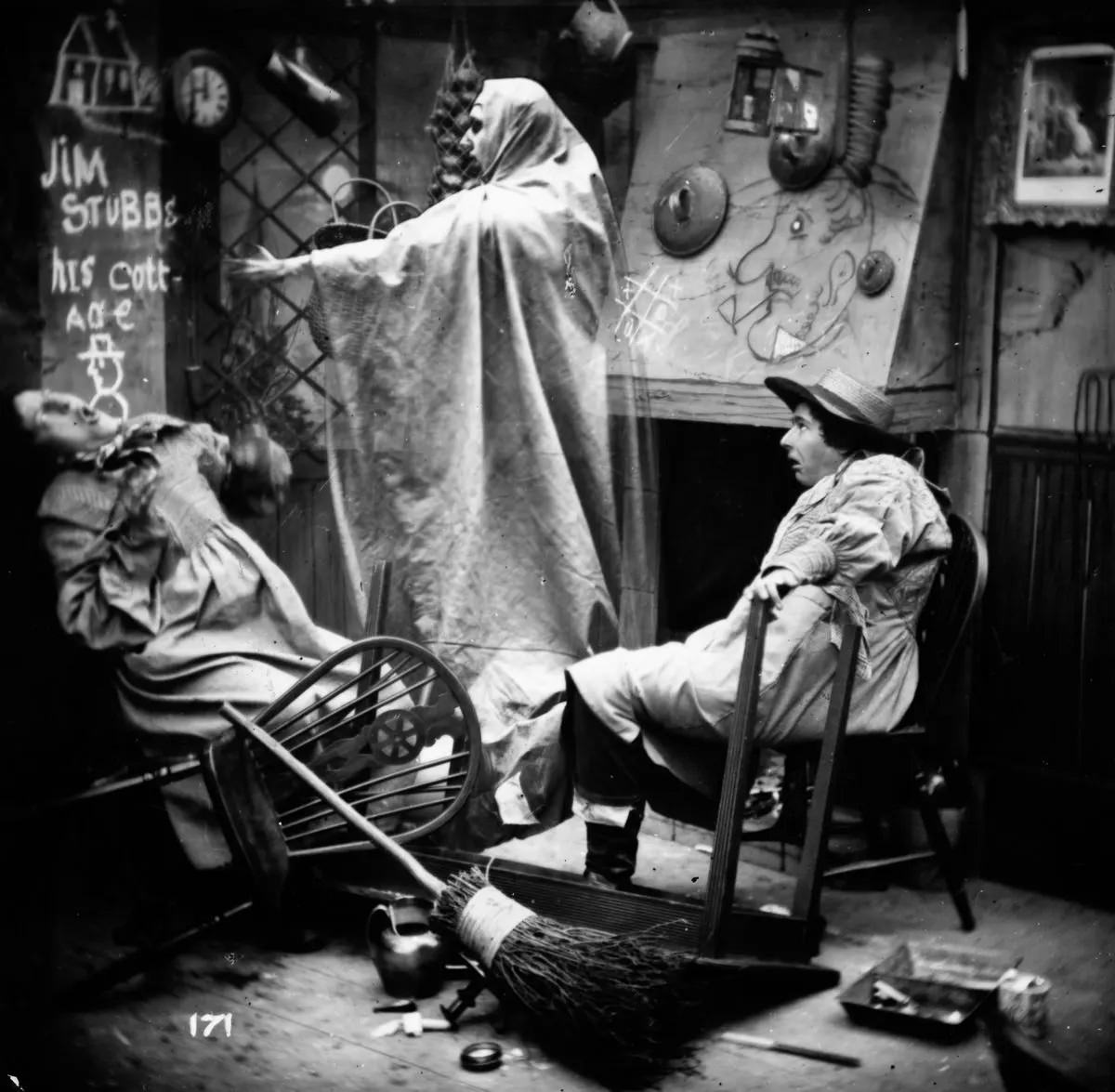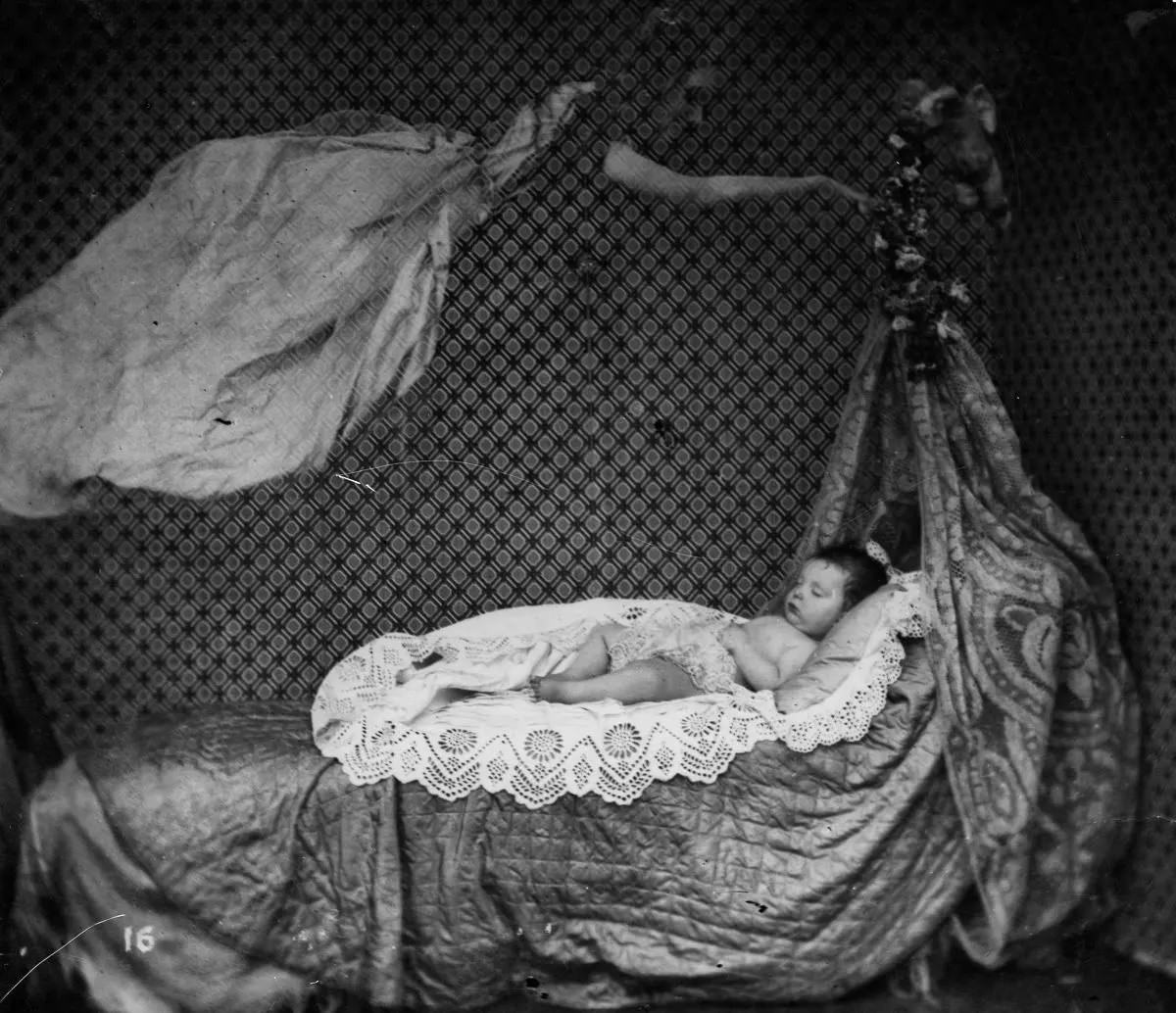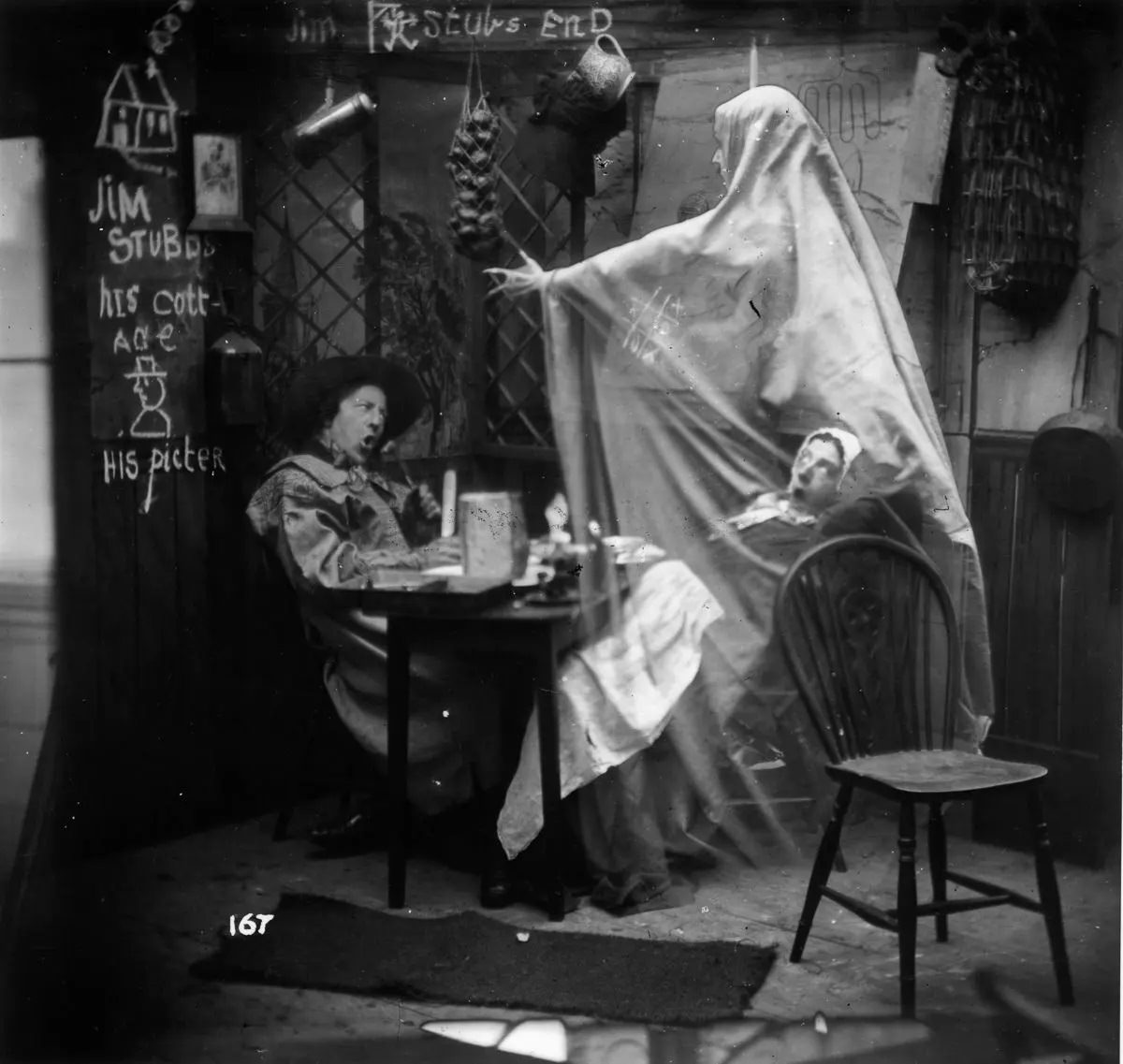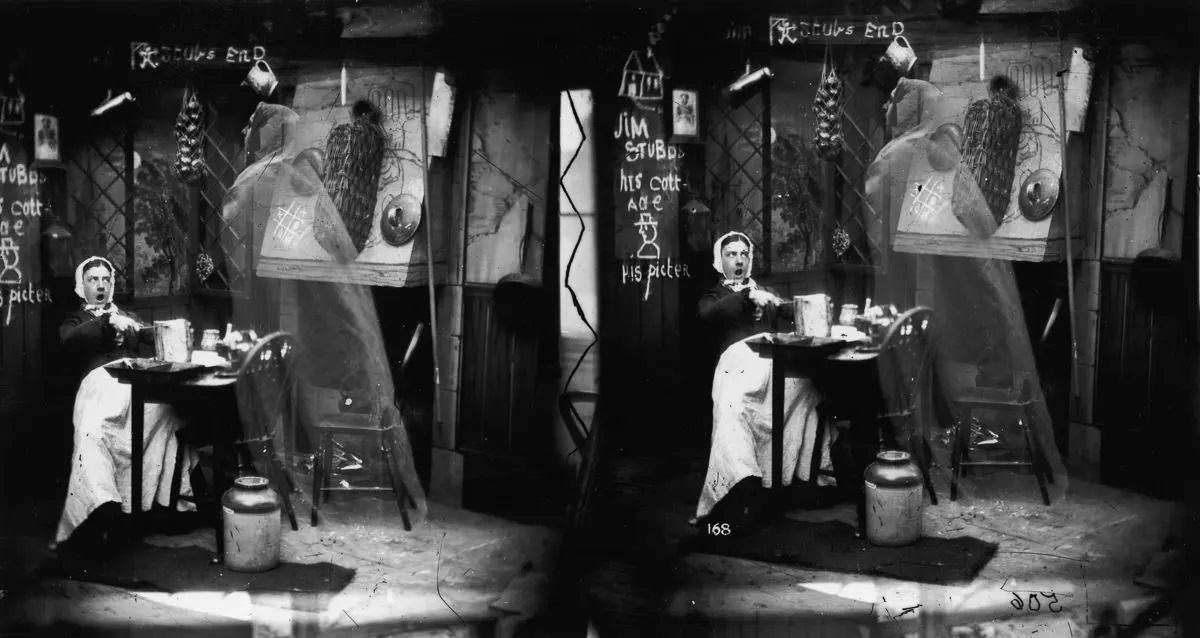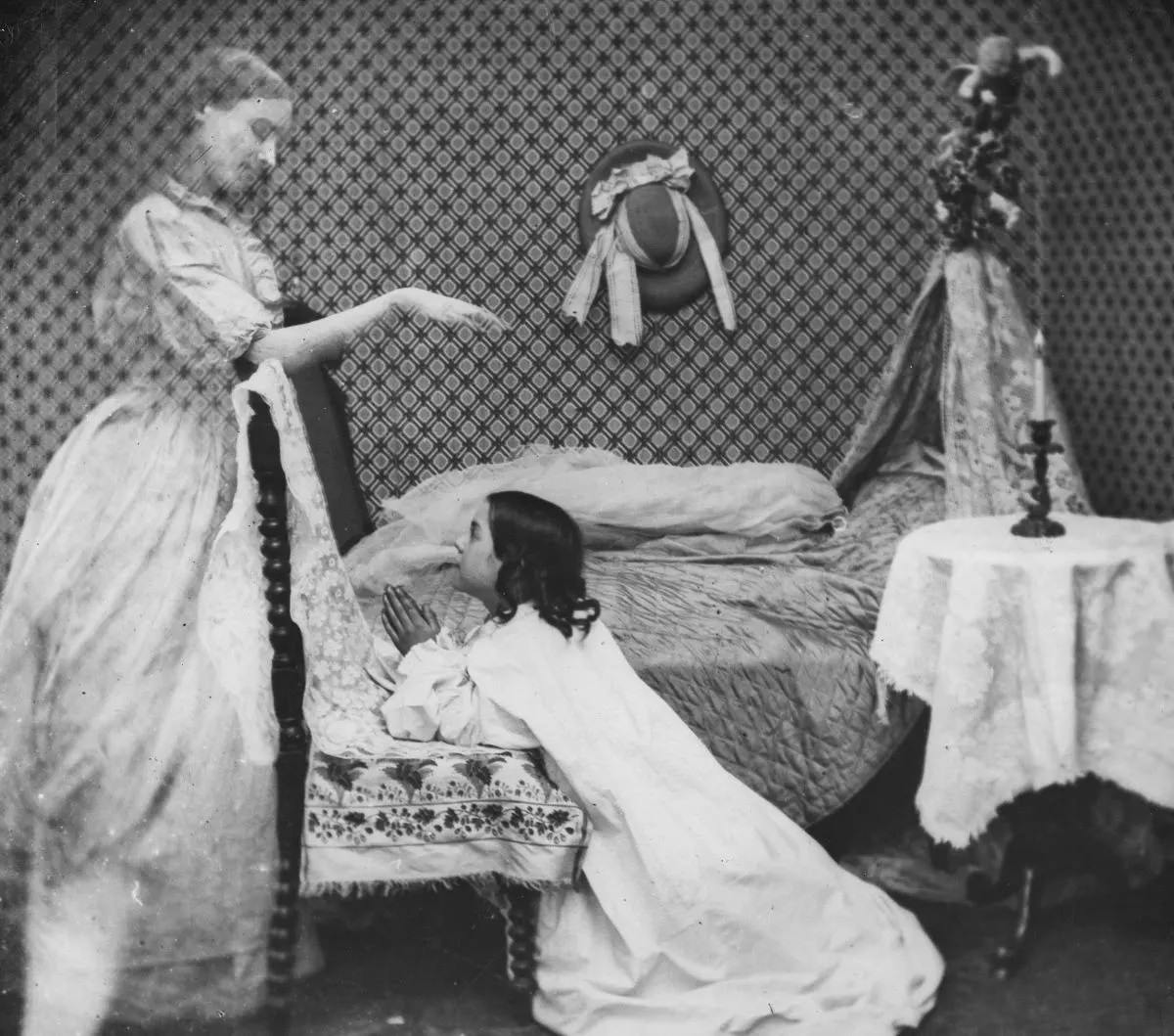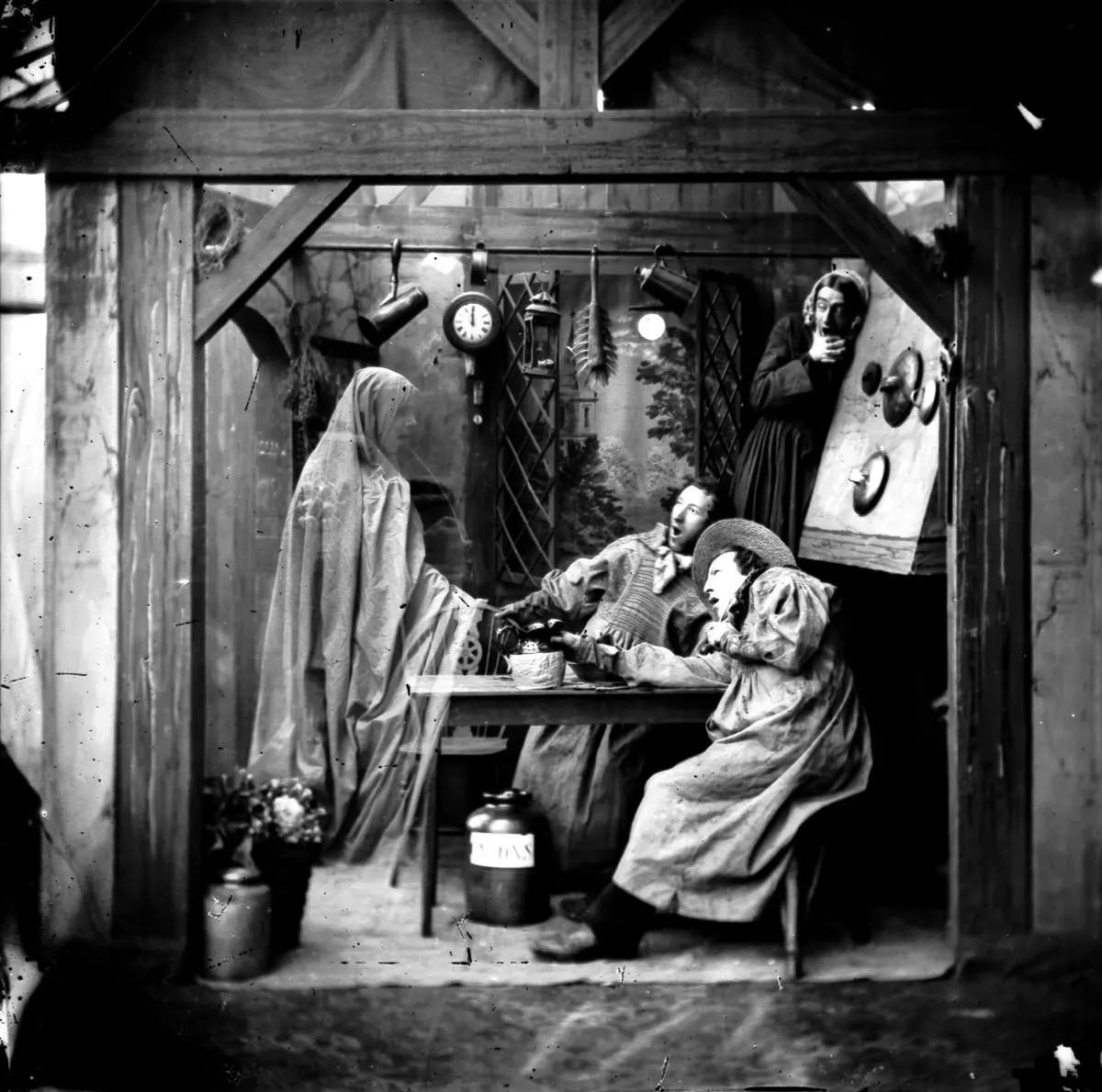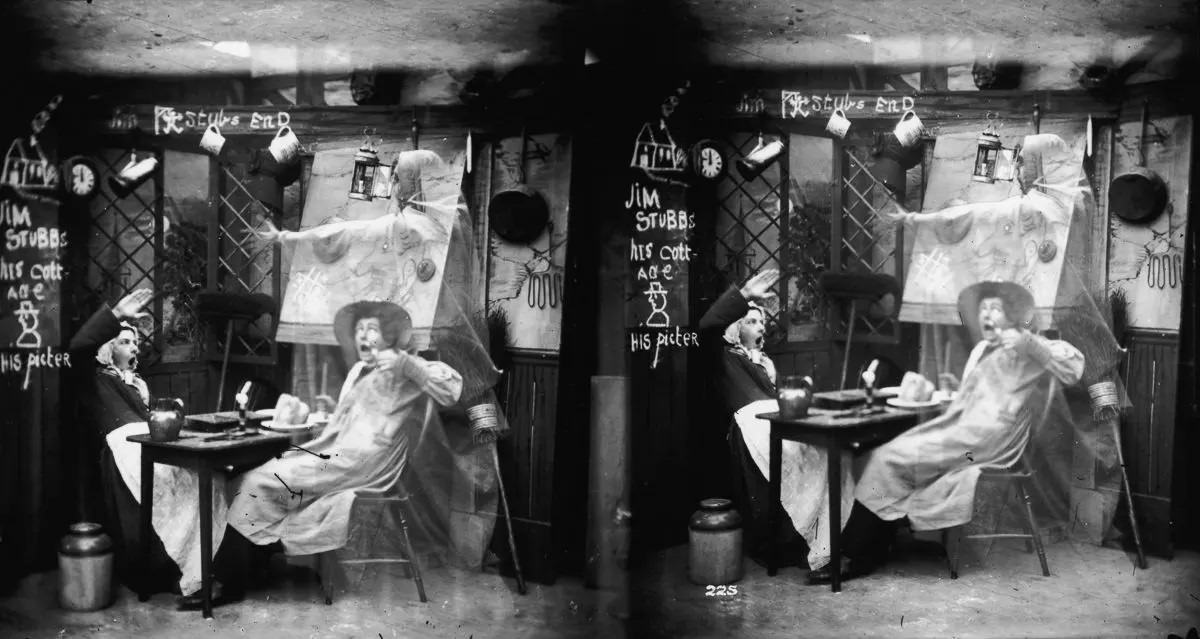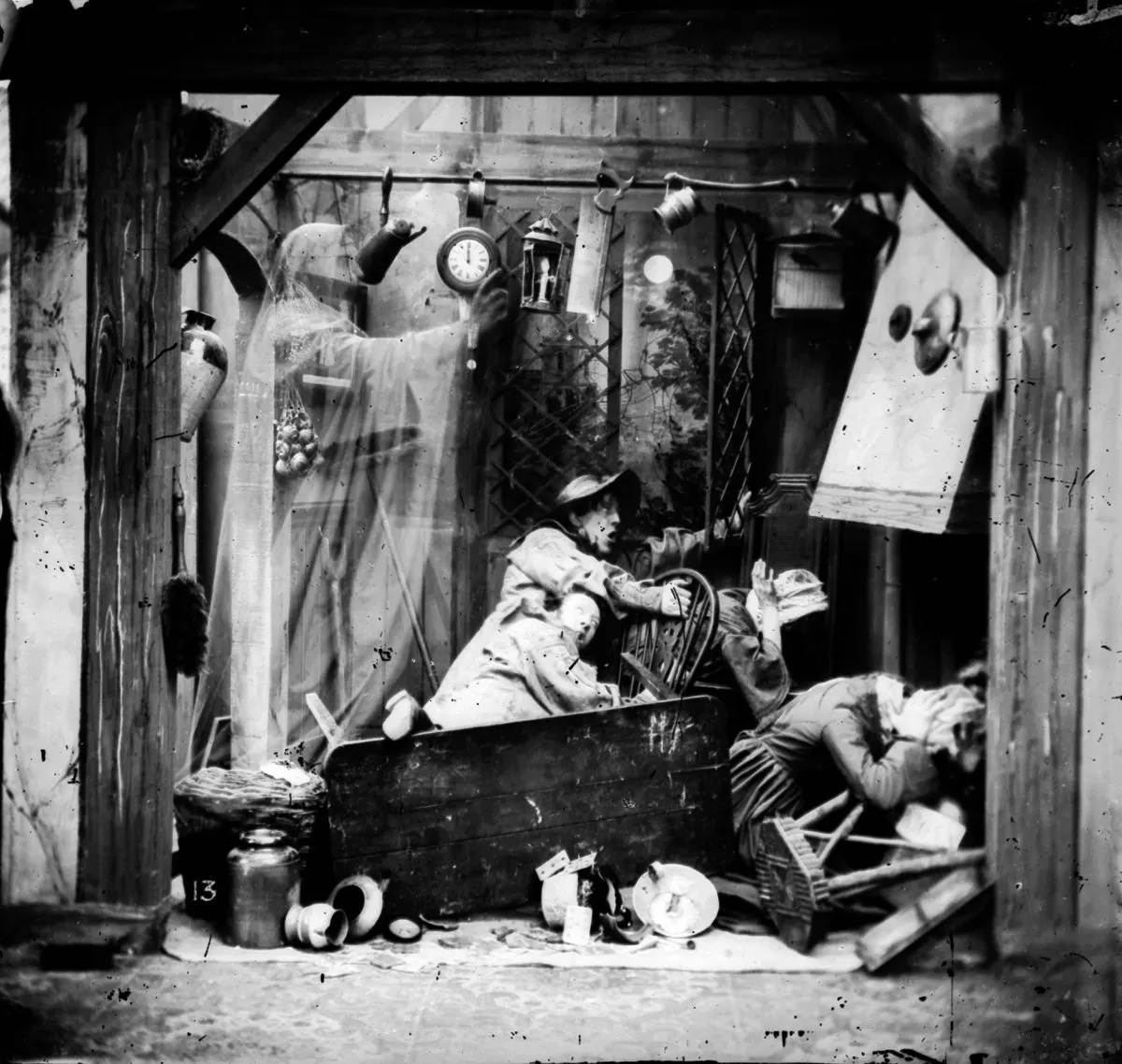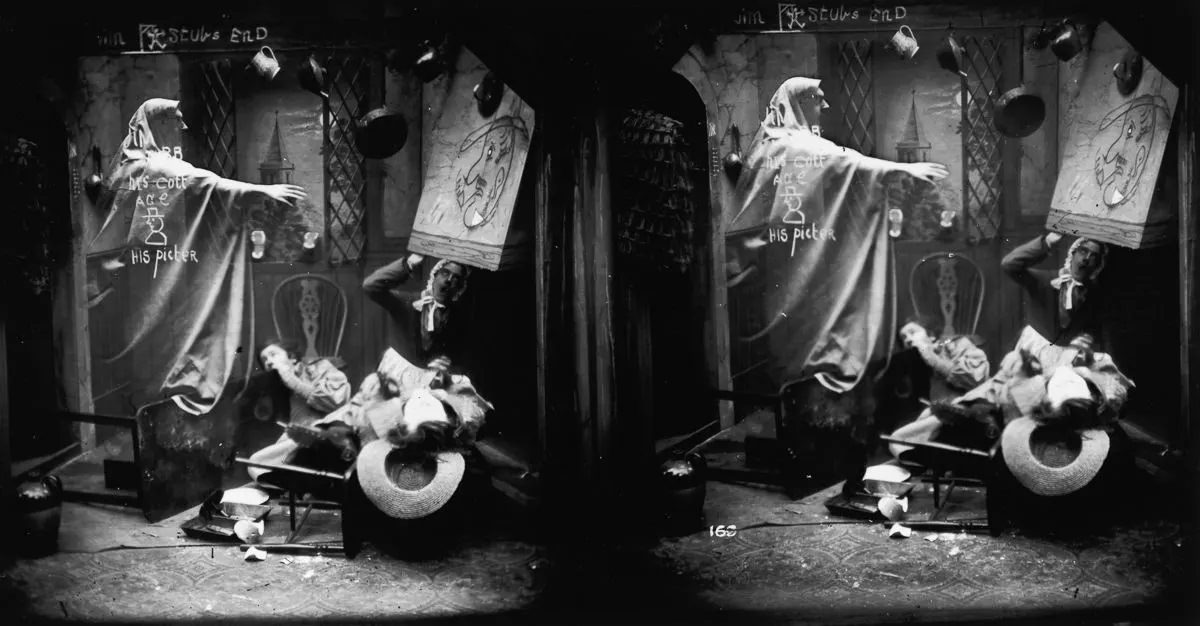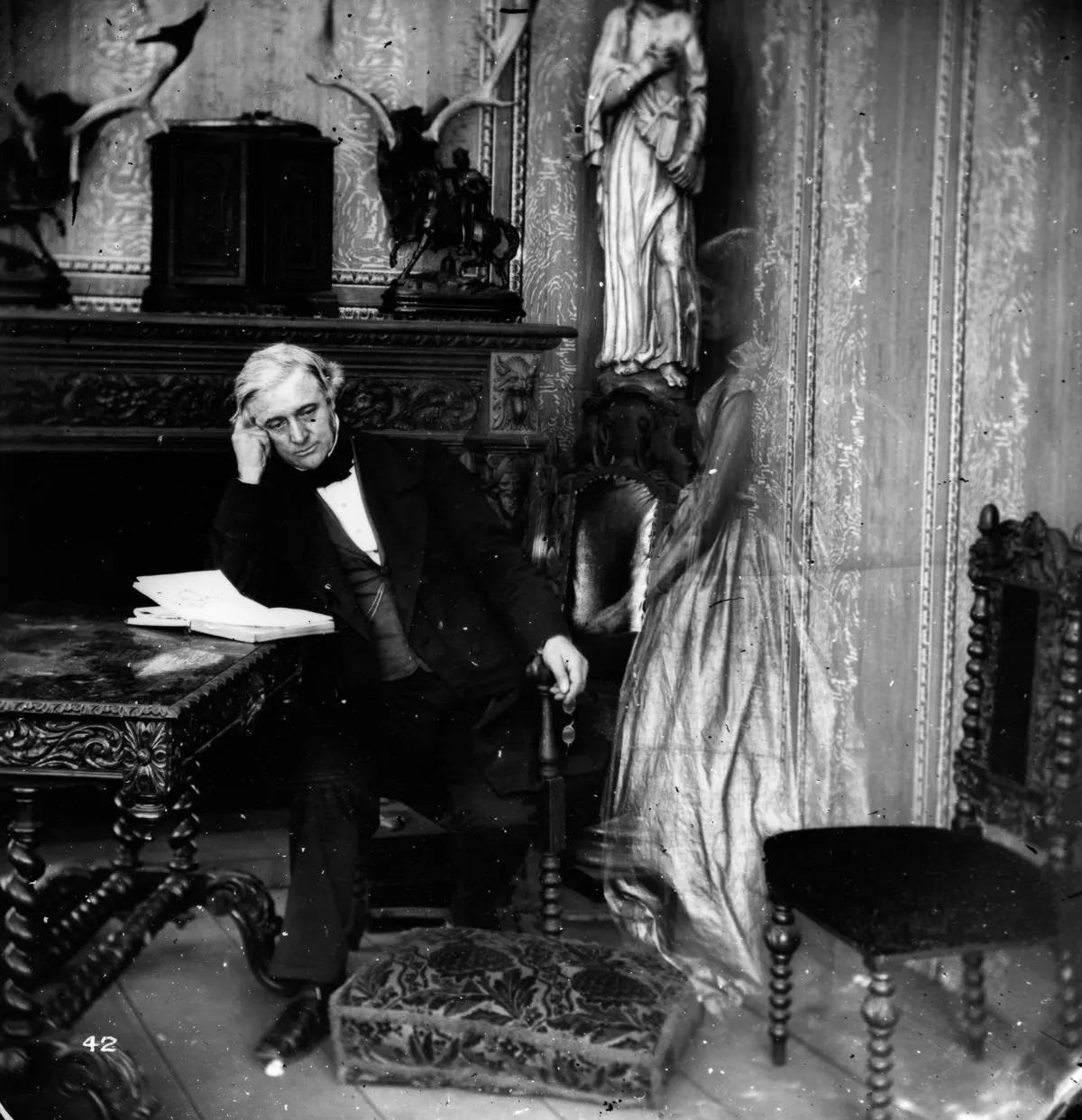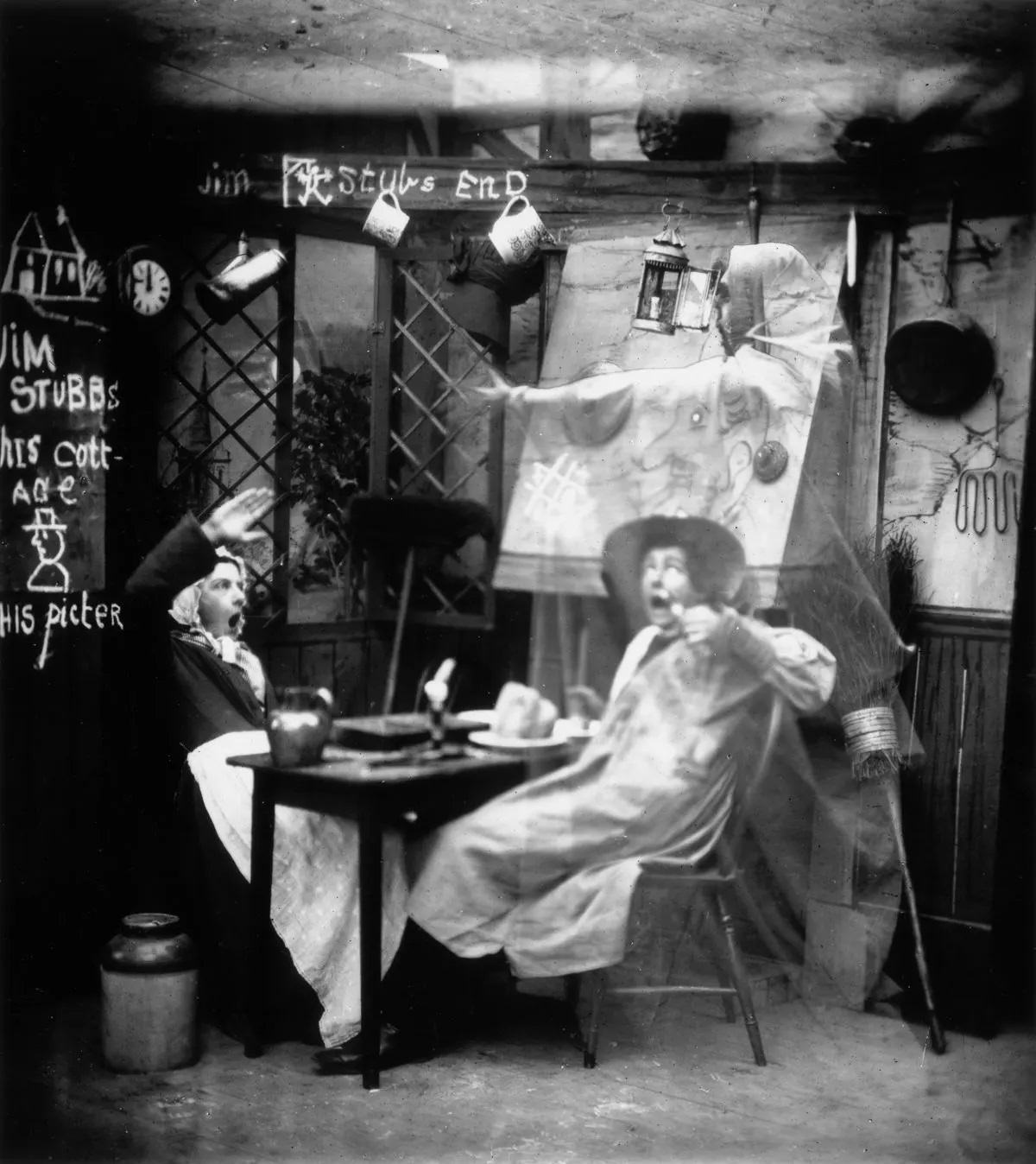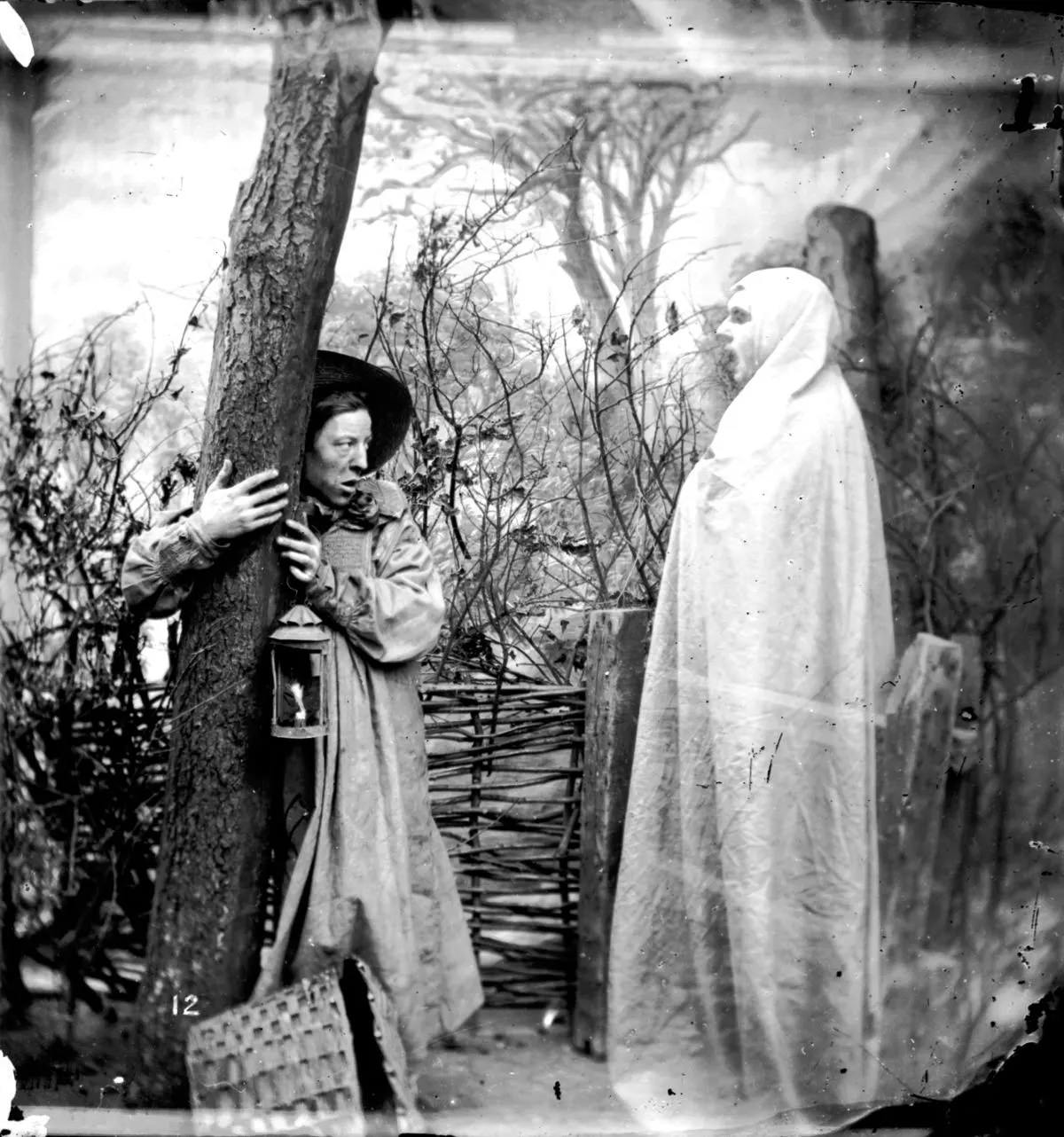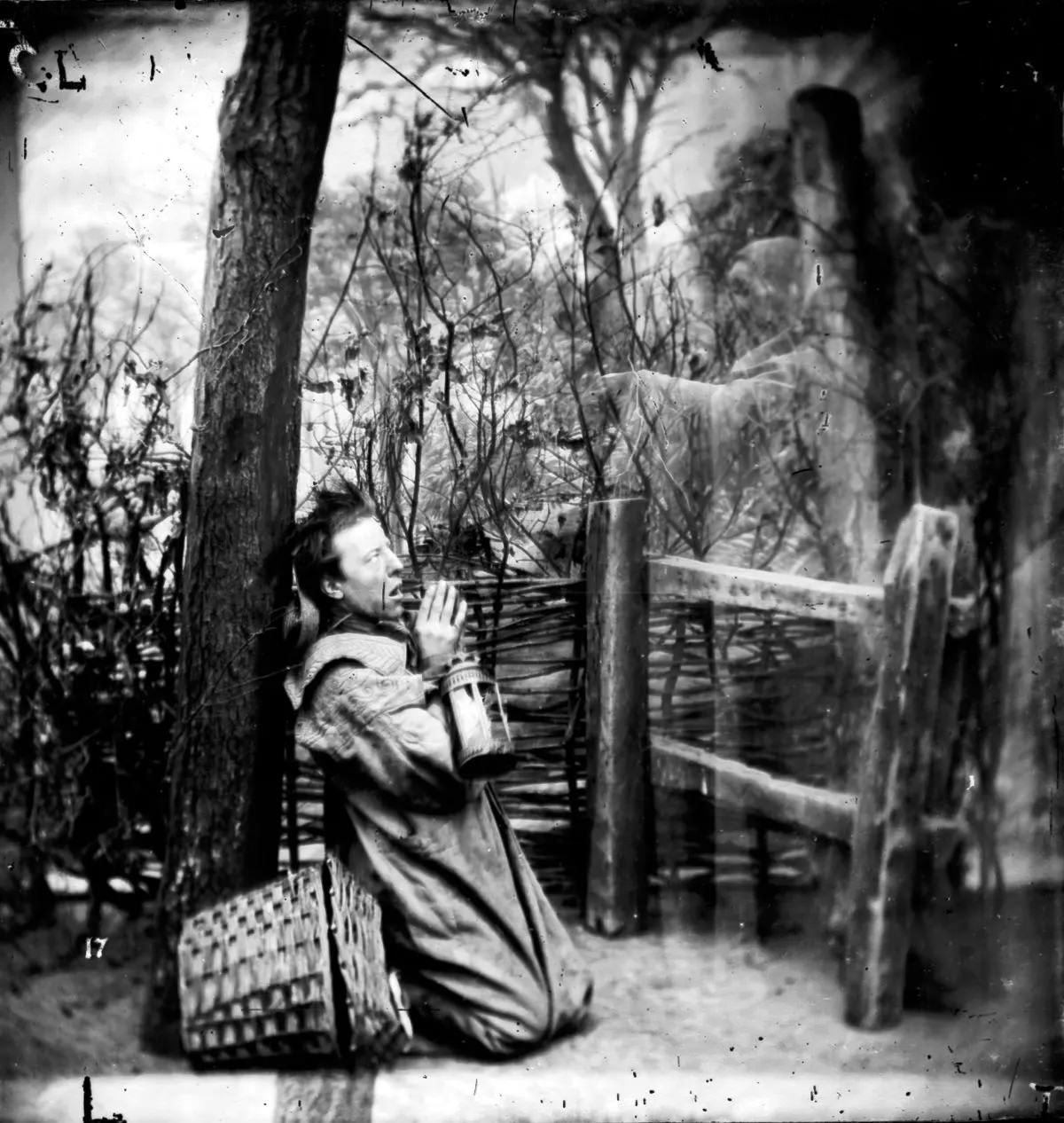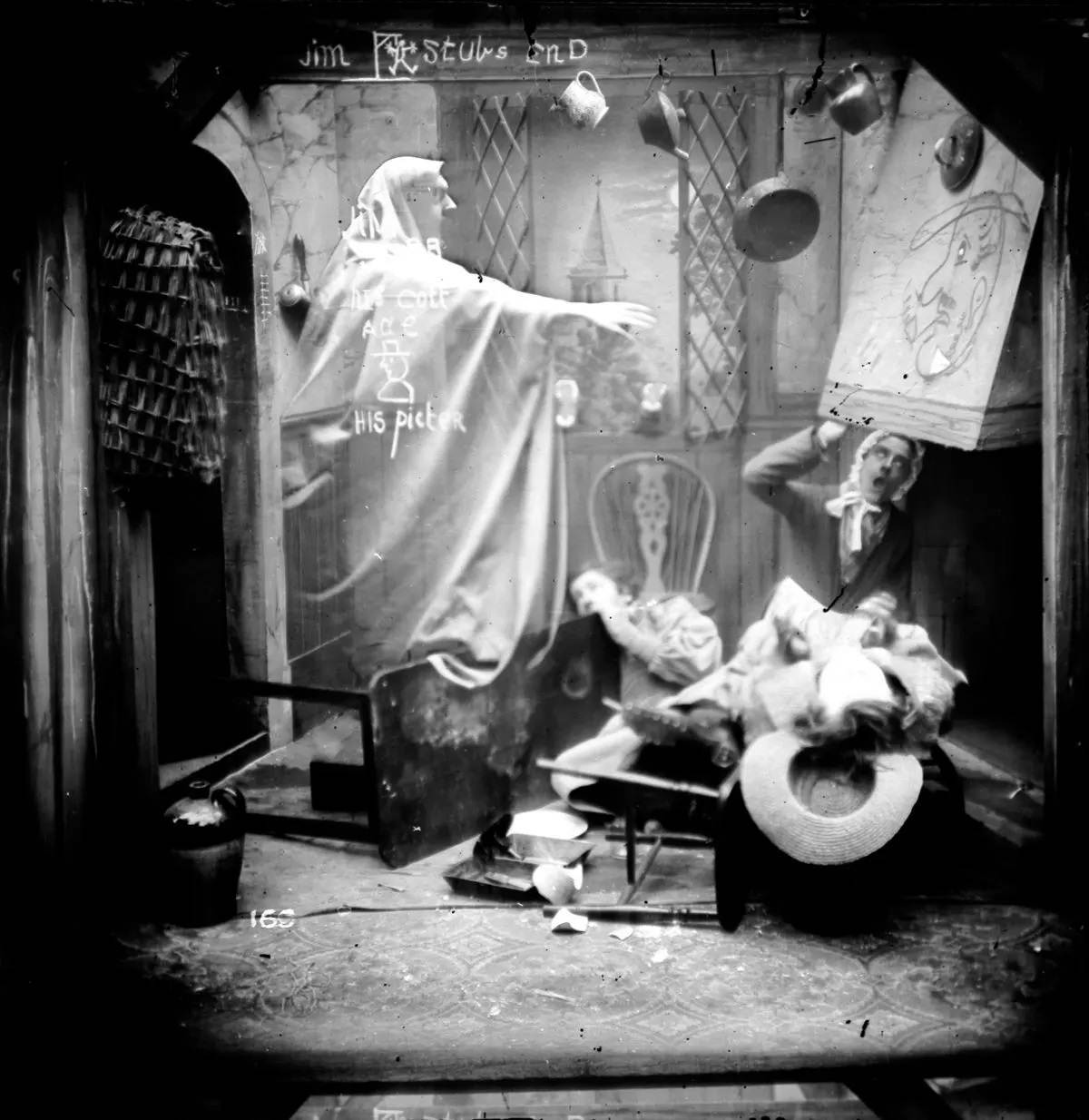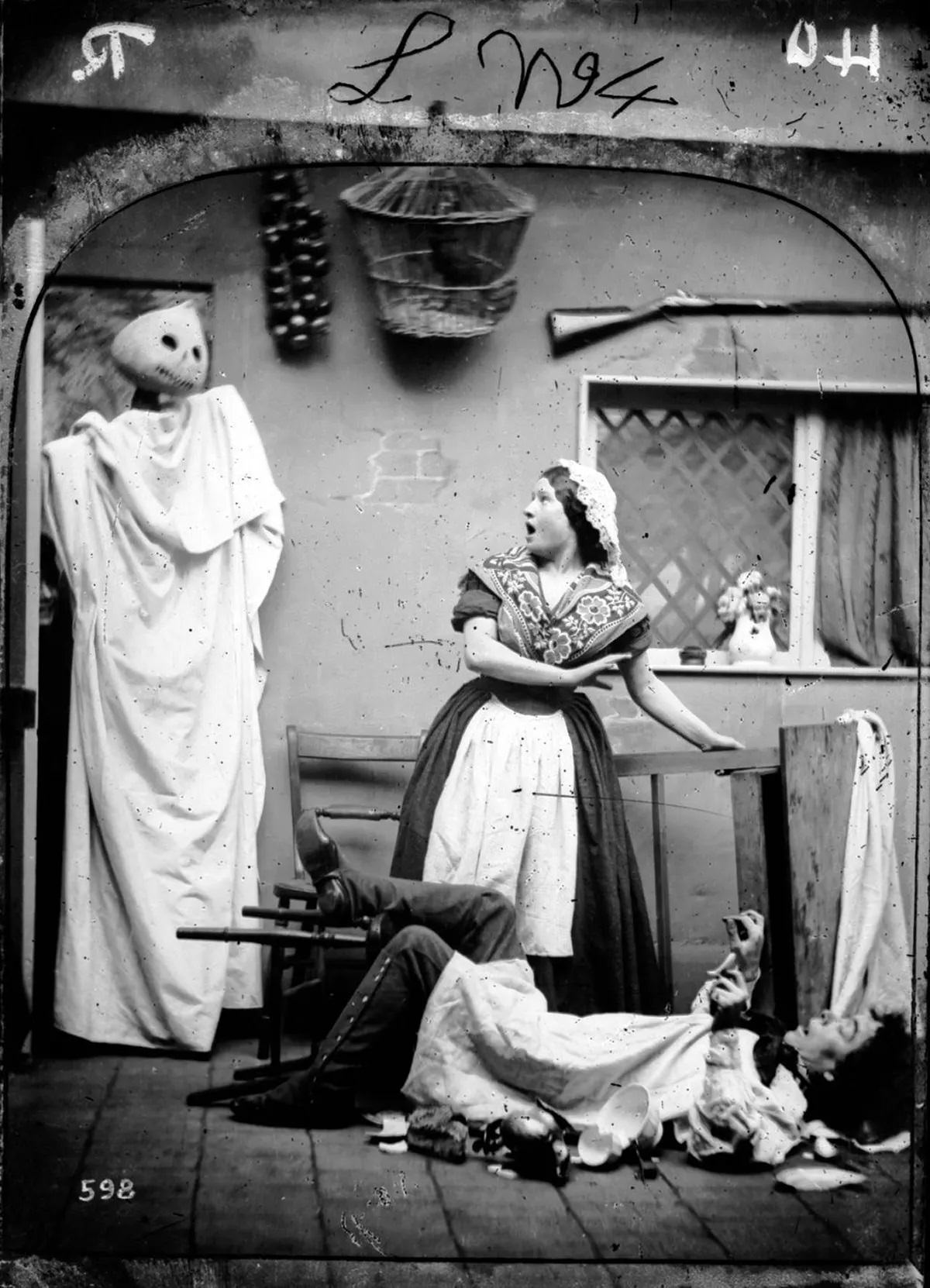The spirit photography movement began in the late 19th century when the spiritualism movement gained traction throughout Europe and the United States. The photographers claimed that they could capture portraits of their subjects and their deceased loved ones in a single frame. The London Stereoscopic Company created these pictures of ghostly spirits and sold them as stereographic cards, which became three-dimensional when viewed through a special viewer. Double exposures and other techniques were used to create mysterious figures.
At times, ghosts would appear very realistic, with their arms wrapped around the living portrait sitter. In other images, the spirits are cotton-like whisps. In the 1860s, spirit photographers began using cut-out faces and bodies from magazines instead of long exposures and double exposures. During the 1880s, as more people owned cameras, spirit photography boomed. Spiritualistic fraud began declining in the 1920s after skeptics such as Harry Houdini countered it.
The London Stereoscopic Company created these pictures of ghostly spirits and sold them as stereographic cards, which became three-dimensional when viewed through a special viewer. The mysterious figures were achieved using double exposures and other photographic trickery.


